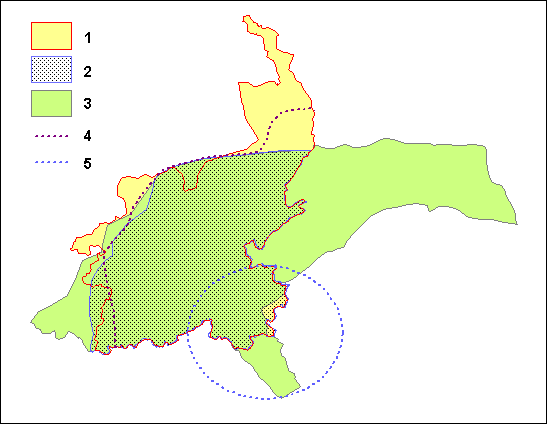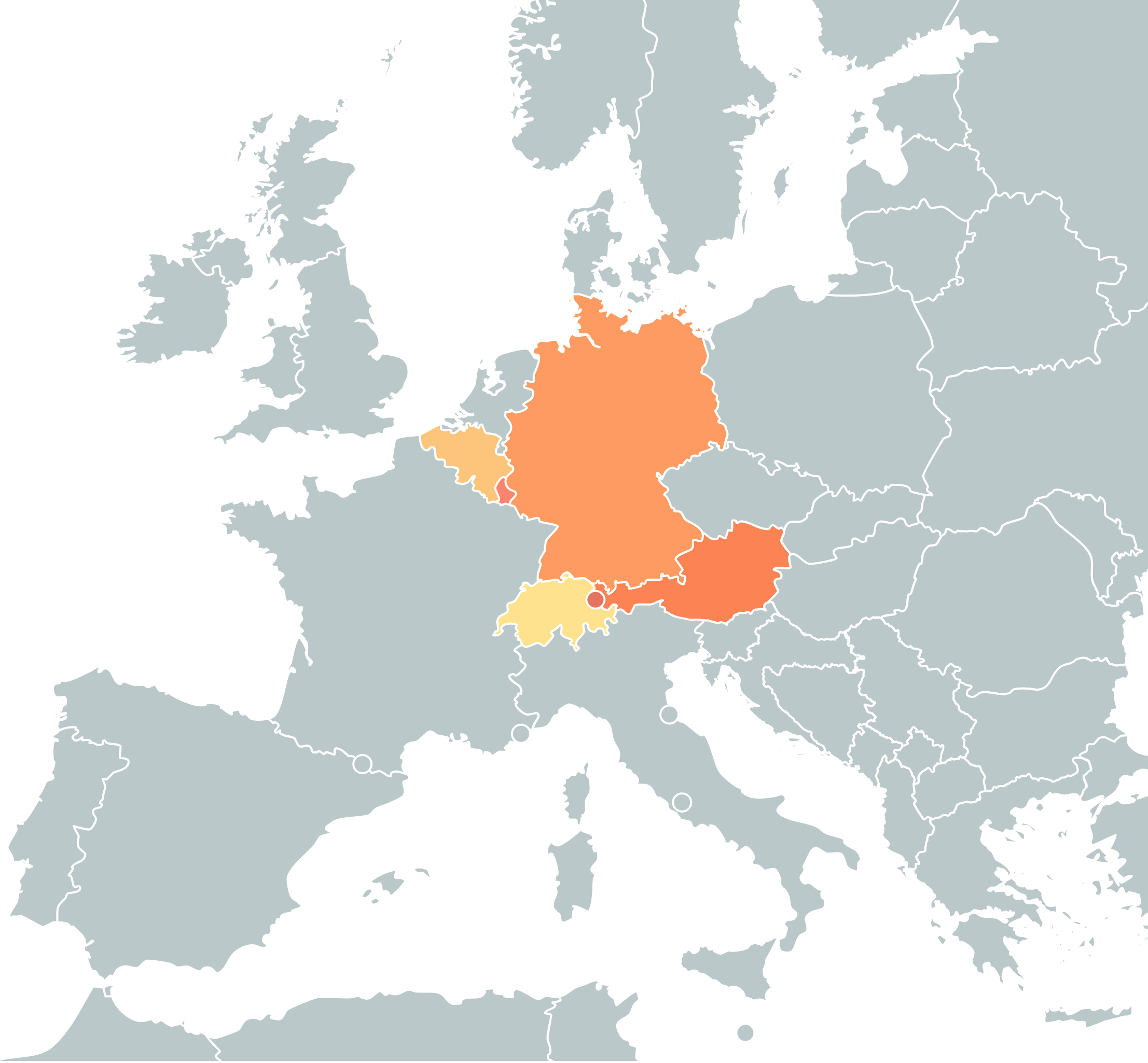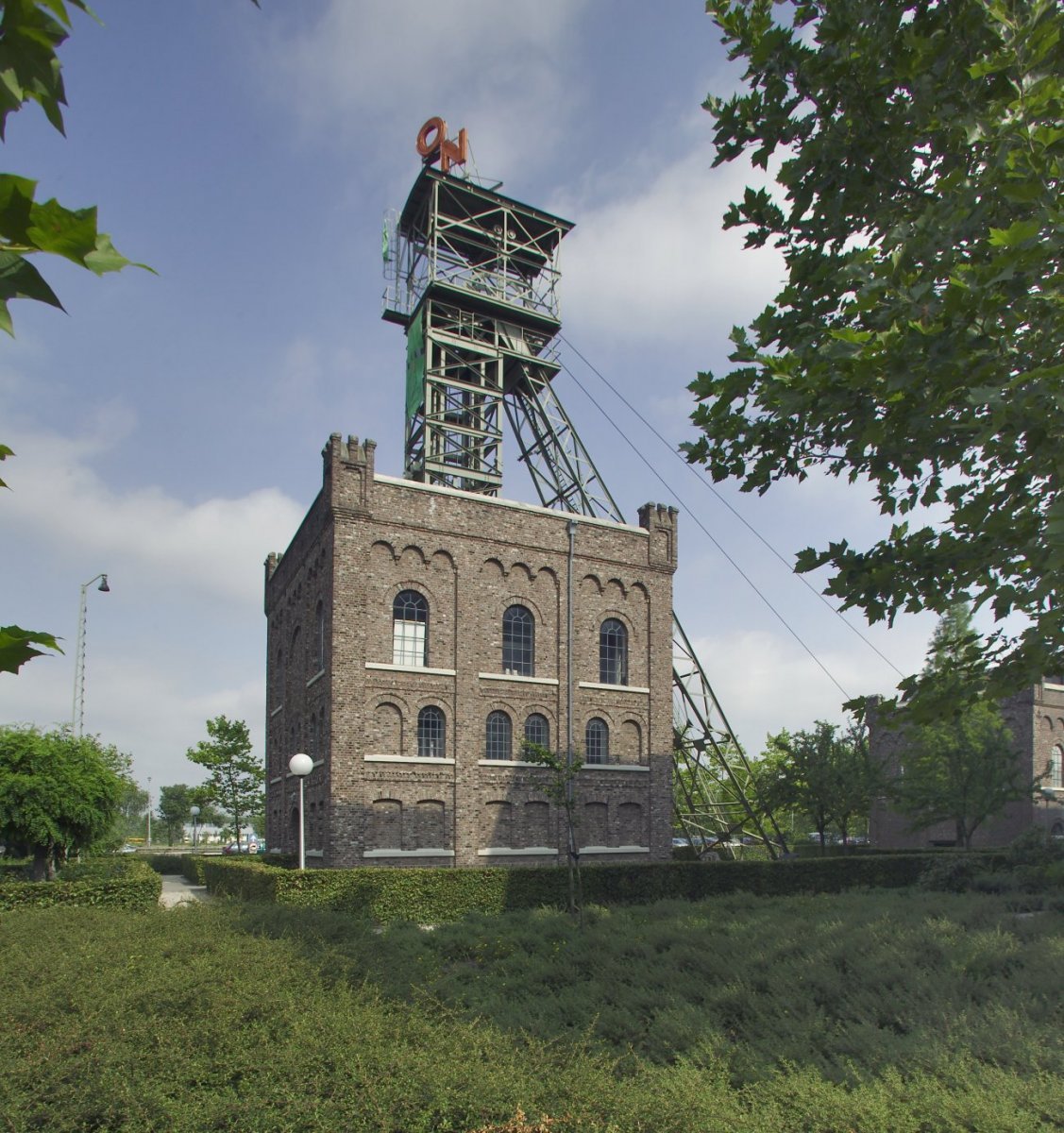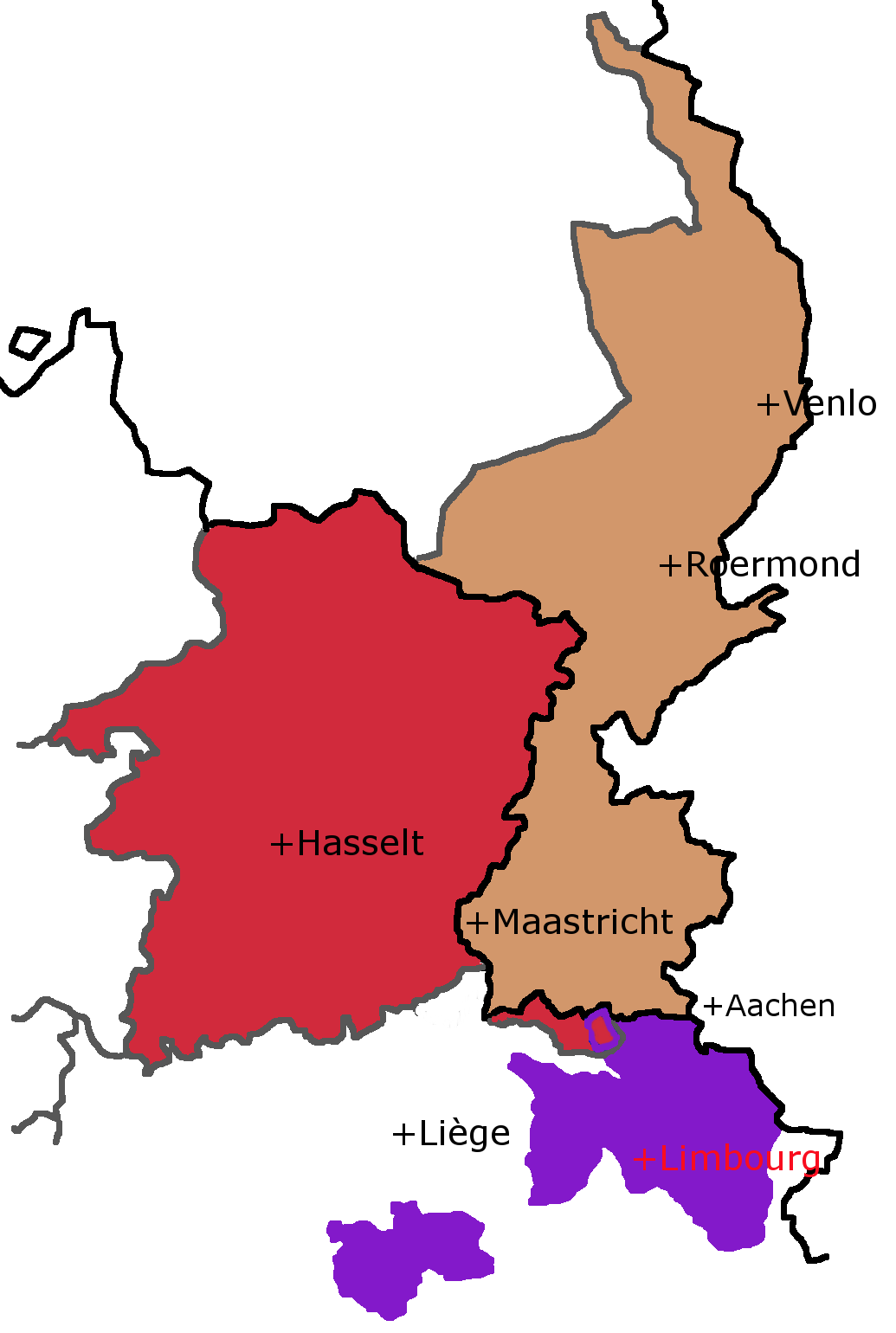|
Meuse–Rhine Euroregion
The Meuse–Rhine Euroregion ( nl, Euregio Maas–Rijn , french: Eurorégion Meuse–Rhin, german: Euregio Maas–Rhein , li, Euregio Maas–Rien ) is a Euroregion created in 1976, with judicial status achieved in 1991. It comprises 11.000 km2 and has around 3.9 million inhabitants around the city-corridor of Aachen–Maastricht–Hasselt– Liège. The seat of the region has been in Eupen, Belgium since 1 January 2007. Within a wider context, the region is part of what is called the Blue Banana European urbanisation corridor. Governmental areas The Meuse–Rhine Euregion comprises: * The western part of the governmental Region of Cologne in Germany including the city of Aachen, the District of Aachen, the District of Düren, the District of Euskirchen and the District of Heinsberg, collectively referred to as the Region of Aachen. * The German-speaking Community of Belgium; the seat of the Euroregion is located in its capital Eupen. * The Belgian Liège Prov ... [...More Info...] [...Related Items...] OR: [Wikipedia] [Google] [Baidu] |
Euroregion
In European politics, the term Euroregion usually refers to a transnational co-operation structure between two (or more) contiguous territories located in different European countries. Euroregions represent a specific type of cross-border region. Scope Euroregions usually do not correspond to any legislative or governmental institution and do not have direct political power. Their work is limited to the competencies of the local and regional authorities which constitute them. They are usually arranged to promote common interests across the border and to cooperate for the common good of the border populations. Criteria The Association of European Border Regions sets the following criteria for the identification of Euroregions:Council of Europe (date unknown). Local and Regional Democracy and Good Governance Website of the Council of Europe. Retrieved from http://www.coe.int/t/dgap/localdemocracy/Areas_of_Work/Transfrontier_Cooperation/Euroregions/What_is_en.asp. * an associ ... [...More Info...] [...Related Items...] OR: [Wikipedia] [Google] [Baidu] |
Euskirchen (district)
Euskirchen () is a Kreis (district) in the south-west of North Rhine-Westphalia, Germany. Neighboring districts are Aachen, Düren, Rhein-Erft-Kreis, Rhein-Sieg, Ahrweiler, Daun, Bitburg-Prüm, and the Liège province (Belgium). History In 1827 a first district around the city of Euskirchen was created, however much smaller than today. In 1932 the district of Rheinbach was dissolved, whereby the Euskirchen district gained its southern part. In 1972 the Euskirchen district grew again by the inclusion of the Schleiden district. Geography Geographically, the south-western half of the district is inside the Eifel hill chain. This land is hardly suitable for agriculture, and therefore in historical times the region was rather poor. Areas further to the north-east are more flat and have historically been used to grow a variety of crops, most notably sugar beets. The only other source of wealth was the iron ore, but today the many forests there make the area interesting for tourists. ... [...More Info...] [...Related Items...] OR: [Wikipedia] [Google] [Baidu] |
Limburgish
Limburgish ( li, Limburgs or ; nl, Limburgs ; german: Limburgisch ; french: Limbourgeois ), also called Limburgan, Limburgian, or Limburgic, is a West Germanic language spoken in the Dutch and Belgian provinces of Limburg and in the neighbouring regions of Germany. It shares characteristics with both German and Dutch but has unique features such as tonality. Within the modern communities of the Belgian and Dutch provinces of Limburg, intermediate idiolects are also very common, which combine standard Dutch with the accent and some grammatical and pronunciation tendencies derived from Limburgish. This "Limburgish Dutch" is confusingly also often referred to simply as "Limburgish", although in Belgium such intermediate languages tend to be called ("in-between language"), no matter the exact dialect/language with which standard Dutch is combined. Although frequently misunderstood as such, Limburgish does not refer to the regional variation of Dutch spoken in Dutch Limb ... [...More Info...] [...Related Items...] OR: [Wikipedia] [Google] [Baidu] |
German Language
German ( ) is a West Germanic language mainly spoken in Central Europe. It is the most widely spoken and official or co-official language in Germany, Austria, Switzerland, Liechtenstein, and the Italian province of South Tyrol. It is also a co-official language of Luxembourg and Belgium, as well as a national language in Namibia. Outside Germany, it is also spoken by German communities in France ( Bas-Rhin), Czech Republic (North Bohemia), Poland ( Upper Silesia), Slovakia (Bratislava Region), and Hungary ( Sopron). German is most similar to other languages within the West Germanic language branch, including Afrikaans, Dutch, English, the Frisian languages, Low German, Luxembourgish, Scots, and Yiddish. It also contains close similarities in vocabulary to some languages in the North Germanic group, such as Danish, Norwegian, and Swedish. German is the second most widely spoken Germanic language after English, which is also a West Germanic language. German ... [...More Info...] [...Related Items...] OR: [Wikipedia] [Google] [Baidu] |
French Language
French ( or ) is a Romance language of the Indo-European family. It descended from the Vulgar Latin of the Roman Empire, as did all Romance languages. French evolved from Gallo-Romance, the Latin spoken in Gaul, and more specifically in Northern Gaul. Its closest relatives are the other langues d'oïl—languages historically spoken in northern France and in southern Belgium, which French (Francien) largely supplanted. French was also influenced by native Celtic languages of Northern Roman Gaul like Gallia Belgica and by the ( Germanic) Frankish language of the post-Roman Frankish invaders. Today, owing to France's past overseas expansion, there are numerous French-based creole languages, most notably Haitian Creole. A French-speaking person or nation may be referred to as Francophone in both English and French. French is an official language in 29 countries across multiple continents, most of which are members of the '' Organisation internationale de la Francopho ... [...More Info...] [...Related Items...] OR: [Wikipedia] [Google] [Baidu] |
Dutch Language
Dutch ( ) is a West Germanic language spoken by about 25 million people as a first language and 5 million as a second language. It is the third most widely spoken Germanic language, after its close relatives German and English. '' Afrikaans'' is a separate but somewhat mutually intelligible daughter languageAfrikaans is a daughter language of Dutch; see , , , , , . Afrikaans was historically called Cape Dutch; see , , , , , . Afrikaans is rooted in 17th-century dialects of Dutch; see , , , . Afrikaans is variously described as a creole, a partially creolised language, or a deviant variety of Dutch; see . spoken, to some degree, by at least 16 million people, mainly in South Africa and Namibia, evolving from the Cape Dutch dialects of Southern Africa. The dialects used in Belgium (including Flemish) and in Suriname, meanwhile, are all guided by the Dutch Language Union. In Europe, most of the population of the Netherlands (where it is the only official language sp ... [...More Info...] [...Related Items...] OR: [Wikipedia] [Google] [Baidu] |
Heerlen
Heerlen (; li, Heële ) is a city and a municipality in the southeast of the Netherlands. It is the third largest settlement proper in the province of Limburg. Measured as municipality, it is the fourth municipality in the province of Limburg. Heerlen forms part of the city-region of Parkstad Limburg, an agglomeration with about 250,000 inhabitants and encompassing 8 municipalities. It is to the east of Maastricht and north of the German city of Aachen. After its early Roman beginnings and a modest medieval period, Heerlen became a centre for the coal mining industry in the Netherlands in the late 19th century. In the 20th century, architect Frits Peutz played a major role in shaping the city as we know it today. His most famous design, and a distinctive building in the city centre, is the so-called Glaspaleis (''Glass Palace''), listed as one of the world's thousand most architecturally important buildings of the 20th century. History A habitation from the Michelsberg ... [...More Info...] [...Related Items...] OR: [Wikipedia] [Google] [Baidu] |
Parkstad Limburg
Parkstad Limburg (; Ripuarian and li, Parksjtad Limburg ) is a conurbation of eight municipalities in the southern part of the province of Limburg in the Netherlands. Consisting Heerlen, Kerkrade, Landgraaf, Brunssum, Simpelveld, Voerendaal, Nuth and Onderbanken, the municipalities work together to improve public services, transport and housing on a regional level. This collaboration started in 1999. Within Parkstad, the city of Heerlen functions as the centre of economic and social activity, and to a lesser extent the cities Kerkrade and Landgraaf function in the same regard as regional hubs. Land use The name Parkstad, Dutch for "Park City", is derived from the relative greenness of the towns, 94,17 km2 (53%) of its area used for non-urban purposes. However, only 10% of the area (roughly 17.8 km2) is forest and nature, 42% (roughly 74.96 km2) is used for agriculture. Previously, the area had been known as Oostelijke Mijnstreek or ''Eastern Mining District'', a ... [...More Info...] [...Related Items...] OR: [Wikipedia] [Google] [Baidu] |
Roermond
Roermond (; li, Remunj or ) is a city, municipality, and diocese in the Limburg province of the Netherlands. Roermond is a historically important town on the lower Roer on the east bank of the river Meuse. It received town rights in 1231. Roermond's town centre has become a designated conservation area. Through the centuries, the town has filled the role of commercial centre and a principal town in the duchy of Guelders. Since 1559, it has served as the seat of the Roman Catholic Diocese of Roermond. The skyline of the town is dominated by the towers of its two churches, St. Christopher's Cathedral and Roermond Minster ("Munsterkerk" in Dutch). In addition to the churches, the town centre has many significant buildings and monuments. It is located about 45 km south east of Eindhoven, 70 km south of Nijmegen, 40 km north east of Maastricht and 50 km west of Düsseldorf. History Celtic inhabitants of this region used to live on both sides of the river Roer. Invading Ro ... [...More Info...] [...Related Items...] OR: [Wikipedia] [Google] [Baidu] |
Limburg (Netherlands)
Limburg (, ) is the southernmost of the twelve provinces of the Netherlands. It is bordered by Gelderland to the north and by North Brabant to its west. Its long eastern boundary forms the international border with the state of North Rhine-Westphalia in Germany. To the west is the international border with the similarly named Belgian province of Limburg, part of which is delineated by the river Meuse. The Vaalserberg is on the extreme southeastern point, marking the tripoint of the Netherlands, Germany and Belgium. Limburg's main municipalities are the provincial capital Maastricht (population 120,837 as of January 2022), Venlo (population 102,176) in the northeast, as well as Sittard-Geleen (population 91,760, bordering both Belgium and Germany) and Heerlen (population 86,874) in the south. More than half of the population, approximately 650,000 people, live in the south of Limburg, which corresponds to roughly one-third of the province's area proper. In South Limbu ... [...More Info...] [...Related Items...] OR: [Wikipedia] [Google] [Baidu] |
Netherlands
) , anthem = ( en, "William of Nassau") , image_map = , map_caption = , subdivision_type = Sovereign state , subdivision_name = Kingdom of the Netherlands , established_title = Before independence , established_date = Spanish Netherlands , established_title2 = Act of Abjuration , established_date2 = 26 July 1581 , established_title3 = Peace of Münster , established_date3 = 30 January 1648 , established_title4 = Kingdom established , established_date4 = 16 March 1815 , established_title5 = Liberation Day (Netherlands), Liberation Day , established_date5 = 5 May 1945 , established_title6 = Charter for the Kingdom of the Netherlands, Kingdom Charter , established_date6 = 15 December 1954 , established_title7 = Dissolution of the Netherlands Antilles, Caribbean reorganisation , established_date7 = 10 October 2010 , official_languages = Dutch language, Dutch , languages_type = Regional languages , languages_sub = yes , languages = , languages2_type = Reco ... [...More Info...] [...Related Items...] OR: [Wikipedia] [Google] [Baidu] |
South Limburg
South Limburg (Dutch: ''Zuid-Limburg'', Limburgish: ''Zuud-Limburg'') is both a COROP (statistical) region as well as a '' landstreek'' (area) of the Netherlands located in the province of Limburg. The Dutch term ''landstreek'', literally translated "land area/region", means that the area is not an administrative region but an area that displays cohesion with regard to culture and landscape. With regards to South Limburg this deals with its hilly landscape, especially in the Heuvelland region, sunken lanes, an abundance of castles, and the regional language Limburgish spoken by a significant part of the population alongside Dutch. The region also contains the highest point above sea level in mainland Netherlands, the Vaalserberg being above sea level (the highest point of the entire country is in the Caribbean Netherlands' island of Saba, namely Mount Scenery being above sea level). The region South Limburg in addition, although extended a little further north to Roermond, form ... [...More Info...] [...Related Items...] OR: [Wikipedia] [Google] [Baidu] |




